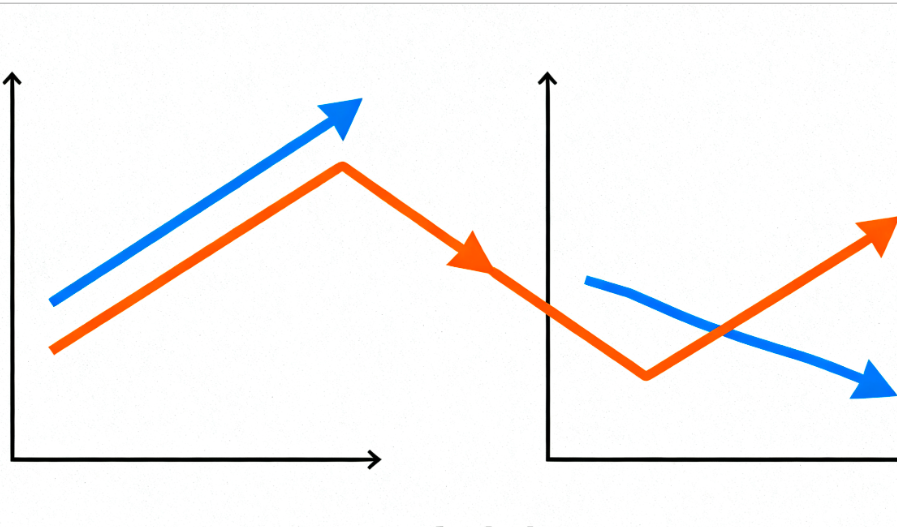
Last week's "flash crash" became the most severe liquidity clearance in the crypto market in nearly two years. The price of BTC once approached $100,000, with global liquidations totaling approximately $19.1 billion within 24 hours, leading to systematic liquidation of leveraged positions across the entire market. Despite the intense short-term volatility, signals from on-chain fund flows and institutional holdings suggest that the market bottom may have appeared, and the release of risk is accumulating momentum for the next market cycle.
The market volatility from October 11th to October 13th resulted from the combined effects of high leverage accumulation and fluctuating macro expectations. Over the past two months, the funding rate remained consistently positive, and futures open interest repeatedly hit record highs, indicating an overly crowded market. The trigger came from a macro-level shock: the US suddenly announced plans to impose 100% tariffs on Chinese imports, sparking a panic sell-off in global risk assets and triggering cascading liquidations. According to CoinGlass data, the single-day net liquidation volume reached about $19.1 billion, with over 1.6 million trading accounts forcibly liquidated, marking the largest single-day liquidation wave this year. The good news is that, although the deleveraging process was painful, it quickly completed the systemic risk clearance. As of October 13th, after experiencing sharp fluctuations, the Bitcoin price was temporarily around $113,800 (data source: CoinGecko), showing a significant recovery from the low two days prior. Signals from both the on-chain and derivatives markets indicate that the market has transitioned from passive panic to an active repair phase, with a healthier structure and an increased proportion of long-term capital.
On-Chain Funds: Selling Pressure Significantly Eases, Showing Signs of Bottoming
After the flash crash, the market did not continue to panic. BTC quickly stabilized and rebounded, with some institutional accounts taking the opportunity to increase their holdings of BTC and ETH. On-chain data shows that during the sharp decline, major stablecoins USDT and USDC traded at a premium on the secondary market. This week, the total market capitalization of stablecoins did not decrease significantly but instead showed signs of a slight increase, indicating that some funds switched from crypto assets to stablecoins during the risk event but chose to remain in the market, waiting and watching. Simultaneously, discussion heat within the crypto community recovered, with topics about "buying the dip" surging nearly twofold, showing that market participant sentiment is gradually recovering. In the crypto market, this transition from panic to hesitation often signifies that a bottoming area is forming.
On-chain data clearly shows the market is transitioning from panic to recovery, with three key signals being particularly crucial: First, selling pressure has significantly eased. The proportion of BTC held on exchanges relative to the total circulating supply has dropped to about 14%, a multi-year low, as more Bitcoin is moved into cold wallets, reducing the number of coins available for short-term sale. Second, capital has not left. Although USDT and USDC experienced brief premiums during the crash, reflecting rising risk-off sentiment, the total stablecoin market cap not only didn't fall but slightly increased, indicating that funds remain in the market, watching and waiting. Third, long-term holders remain steady. The proportion of "old coins" held for over one year remains near historical highs; they did not panic-sell during the sharp volatility. The departure of short-term speculators, in turn, has made the market's coin structure healthier. Overall, short-term panic selling has passed, capital is still waiting for opportunities, and long-term funds are holding firm – these are important signals of the market bottoming.
Options Market: Stabilization Signals, But Risk-Off Sentiment Persists
The options market adjusted rapidly after this round's sharp decline, showing several notable changes: Market panic has significantly eased. The Implied Volatility (IV), which measures expected price volatility, has dropped significantly in the short-term cycle, indicating traders believe the phase of intense volatility is largely over. However, demand for hedging remains. The price of put options, which protect against downside, remains significantly higher than call options, and more capital is flowing into contracts expiring at the year-end, suggesting investors are still guarding against the market retesting lows. Fortunately, the risk of "passive selling pressure" triggered by derivatives has been mostly eliminated. Based on market forecasts, as long as Bitcoin maintains consolidation within the $110,000-$120,000 range, the vicious cycle of "selling more as prices fall" is unlikely to repeat. Overall, the options market expects extreme price movements to be unlikely in the short term, but investors' cautious mindset has not yet dissipated.
Fund Flows: Value Assets Demonstrate Resilience
During this market correction, the performance of different sectors diverged significantly, clearly confirming the trend of "capital shifting from speculation to value." Major cryptocurrencies showed relatively strong resistance to decline. The maximum drawdowns for BTC and ETH were 15% and 20% respectively; while not immune, their volatility was far less than most small-cap tokens. The rising Bitcoin dominance rate further indicates that capital is flowing from altcoins to core assets. Sectors with real value demonstrated stability. RWA (Real World Asset tokenization) saw relatively limited declines due to its peg to physical assets; platform tokens rebounded quickly supported by trading volume, showing the support of fundamentals. In contrast, purely speculative assets suffered huge losses, with some nearly wiped out, showing weak rebounds. This indicates that market sentiment is becoming more rational, with investors focusing more on the practical value and application prospects of projects. Overall, this adjustment is a natural process of market de-bubbling. Quality assets will continue to be favored, while targets lacking substantive support warrant caution.
Strategy Insight: Structured Thinking May Become a More Critical Dimension
After the market experiences sharp volatility, the advantages of structured products become more apparent. For investors wishing to participate but unwilling to bear high volatility risk, dual-currency wealth management products, snowball structures, or range-bound yield products can lock in steady returns within consolidation ranges. The current market condition resembles a "low-volatility recovery period," where aggressively betting on a rebound is less advisable than making steady deployments. Investors can, based on their risk preferences, build an allocation framework of "low volatility + yield enhancement" through phased entry and product combinations. A strategy that balances offense and defense with flexible allocation is the best approach during period transitions.
This flash crash reshuffled the market and rapidly evaporated bubbles. As institutions flow back and on-chain structures stabilize, the crypto market is entering a new phase of equilibrium. Matrixport will continue to monitor changes in the macro environment and market structure, assisting investors in navigating steadily through the new cycle of digital assets.
The above content is from Daniel Yu, Head of Asset Management. This article represents the author's personal views only.
Disclaimer: The market carries risks, and investment requires caution. This article does not constitute investment advice. Digital asset trading can be extremely risky and volatile. Investment decisions should be made after careful consideration of personal circumstances and consultation with financial professionals. Matrixport is not responsible for any investment decisions made based on the information provided in this content.
















